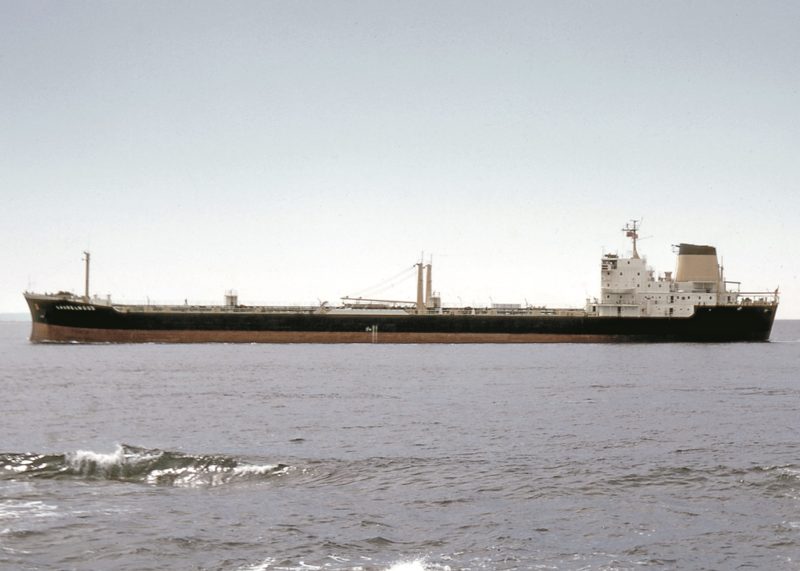
John I. Jacobs belonged to a Jewish family from Swansea and moved to London in 1880 to build up a sailing ship fleet managed from his office at 6, Billiter Street. Strong links were retained with Swansea however, with all of his sailing barques and early tankers registered there, and all flying the Star of David on their houseflag. A trade with Argentina was one of the regular routes served by his sailing ships. A dozen barques were owned during the 25-year period from 1880 to 1905 when the first steamers were purchased for conversion into tankers. The two largest barques were Magwen and Rollo, the latter built on the Clyde in 1876 and owned for twenty years from 1890 until sold as the last owned sailing ship in 1910. Swansea Castle and her sister Windsor Castle built in 1874/75 were two more of his sailing ship fleet. One old steamer was purchased from the National Steam Shipping Co. Ltd. as Greece in 1895, having been built by Palmers at Jarrow in 1863 as Virginia but she was quickly sold for scrap within a year.
The management company was converted to one of limited liability in 1905, the year in which two old tramps were purchased for carrying molasses in bulk mostly from Cuba. They were both Tyne-built, Oakwood coming from the Northumberland yard at Howdon in 1903 and purchased from the Lingham Timber & Trading Co. Ltd. of London. The other was much older, having been built as Restitution in 1885 at the Neptune yard of Wigham Richardson Ltd. and was purchased from R. Conaway & Company, Liverpool. An expansion of the molasses fleet took place in early 1911 when four tankers were purchased from the European Petroleum Company of London as Batoum, Baku Standard, Broadmayne and Vedra. The old Restitution was sold on that year to the Southern Sealing & Whaling Co. Ltd. (G.D. Irvin & C.O. Johnston), North Shields for the carriage of Antarctic whale oil, and she later foundered in 1916 on her way south from Liverpool to the whaling grounds.

Two new tanker companies were registered, Associated Oil Carriers Ltd. and Oil & Molasses Tankers Ltd., the latter to own Weehawken of 1891 purchased on 6th April 1911 from the Anglo-American Oil Co. Ltd. Another two tramps were converted into tankers in 1912, these were the Laing-built lndradeo completed in August 1902 and purchased as Falls of Momess and renamed Teakwood after conversion; and Saint Dunstan built by Swan, Hunter & Wigham Richardson Ltd. in 1900 for Saint Line Ltd. (Rankin, Gilmour & Co. Ltd., Liverpool) and renamed Beechwood after conversion. The company office was now at 10, Mark Lane, London EC. Their fleet of eight tankers was heavily occupied with carrying molasses cargoes, but the coming war was to see them carry fuel oil and gasoline, with half of them lost to German U-boats:-
11.8.1915 Oakwood
Captured/sunk by gunfire 45 miles SSE from Old Head of Kinsale o.v. Liverpool to Cienfuegos in ballast.
28.4.1917 Teakwood
Torpedoed/sunk in the Mediterranean o.v. Messina to Port Said in ballast.
19.6.1917 Batoum
Torpedoed/sunk 6m S of the Fastnet o.v. New Orleans to Queenstown with oil, 1 lost.
11.2.1918 Baku Standard
Torpedoed/sunk 6m S of Stonehaven o.v. Greenock to the Firth of Forth with fuel oil, 24 lost.
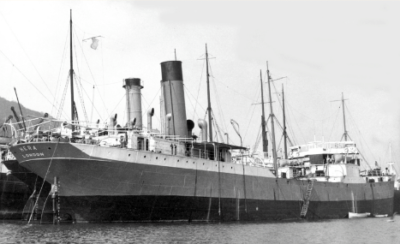
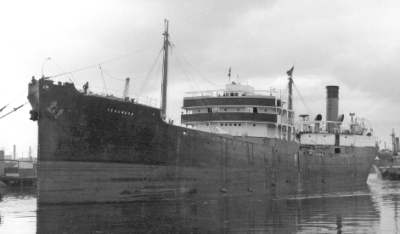
Batoum and Baku Standard had been attacked by U-boats on earlier occasions but had escaped by increasing speed. The dry-cargo tramp Tiverton was purchased during the war from Steel, Young & Company of London, and was converted into a tanker in 1920. Three dry-cargo tramps were managed during the war for the Page Shipping Co. Ltd. of 71, James Street, Cardiff as Corinth, Mary Baird and Carmelite. The latter had been built on the Wear in 1892 as Clan Macrae for Clan Line, but unfortunately this trio all became war losses. Vedra stranded on Walney Island on 7th December 1914 and burnt out while about to enter Barrow docks with benzine (petrol) from Sabine in Texas. The Cumbrian steel town was a major importer of oil from 1888 to 1926 when oil imports were relocated to river berths in the Mersey, a similar fate being suffered by the oil jetty and refinery at nearby Heysham, which was in full use from the late 1930s until 1967.
Broadmayne of 1893 was wrecked off Dartmouth on 2nd January 1921 while on a voyage from London to Newport News in ballast and attempting to drop off the Channel pilot. The fleet in the summer of 1921 consisted of three tankers, Beechwood of 1900, Tiverton of 1906 and Weehawken of 1891. A fourth tanker was purchased in 1924 as Wabasha for Oil & Molasses Tankers Ltd., having been built at Hartlepool in June 1903 as the tanker Beaumont for Fumess, Withy & Co. Ltd. and named after the town in Texas when the Spindletop oil gusher had been found in January 1901. She had been sold to the Anglo-American Oil Co. Ltd. in 1904 and renamed Seminole, but was only traded by Jacobs for two years before being sold on to German owners and renamed Nordsee and was broken up in 1932 during the Depression.
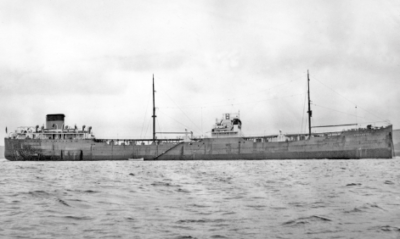

The tanker fleet was boosted in 1927 by the delivery of the first purpose-built tanker Teakwood (2) of 9,500 dwt from the Armstrong yard on the Tyne. Two larger twin-screw motor tankers were then completed in 1929/30 as Laurelwood of 11,250 dwt from the Armstrong yard and the Longwood of greater length and 14,230 dwt from the Laing yard on the Wear. The American engines-aft bridge amidships tanker Hera built in 1912 at Greenock was purchased in 1927 and retained her name, having been built for the Deutsche-Amerika Petroleum Ges. and ceded in 1919 to the U.S.A. as war reparations and she joined the Standard Oil fleet. The fleet of six tankers at the beginning of the Depression were split equally between the two companies, Oil & Molasses Tankers Ltd. and Molasses & General Transport Co. Ltd., the latter company set up in 1924. Some of the fleet were used on the bulk petrol trade to Cape Town, but Hera was laid-up at Dartmouth on 1st September 1930 until sold for scrap in June 1937 and others of the fleet had to be withdrawn from service. The old converted tankers Beechwood and Tiverton had been laid-up for years on the Tyne and were sent for scrap, Beechwood being broken up at Rosyth in February 1934 while Tiverton was dismantled at Gateshed in early 1934. A replacement was found in the new Norwegian tanker Stegg built by Laing in 1931 and renamed Rosewood in 1934.
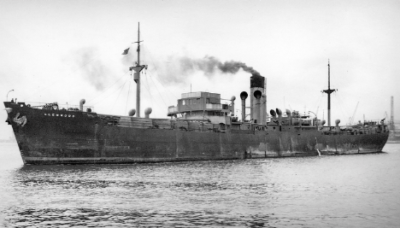
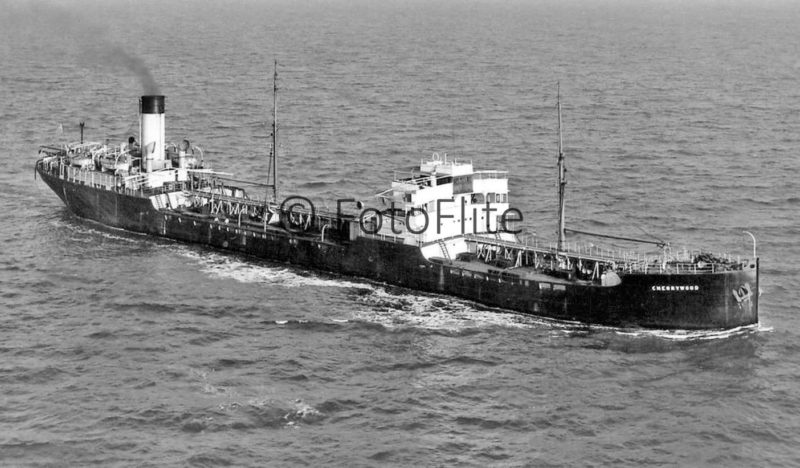
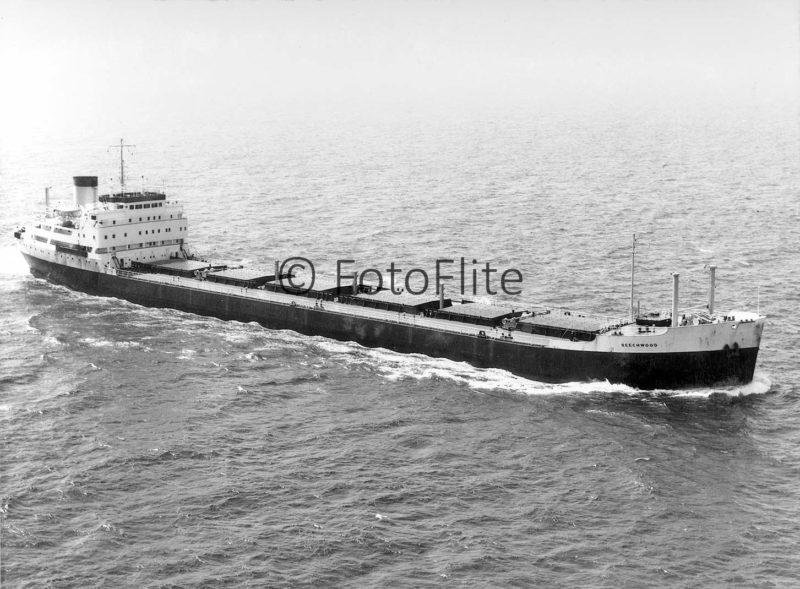
The freight rates for oil and molasses improved earlier than for dry-cargo commodities, and the fleet of four new tankers were fully employed from 1934 onwards. The fifth was laid-up, this was the Hera the doyen of the fleet. During World War II the four Jacobs tankers were requisitioned for Admiralty service and made important contributions to the final victory while carrying Navy fuel. Rosewood was torpedoed on 9th March 1943 in convoy SC 121 in a Force 10 gale and blinding snowstorms to the South of Iceland and although she remained afloat and drifted for a few days all of her crew of 33 and nine gunners were lost. Longwood was damaged by a torpedo on 31st January 1942 when 20 miles from the Outer buoy at Colombo, and Teakwood was hit by a torpedo near the Isles of Scilly on 21st September 1939 but was only slightly damaged.
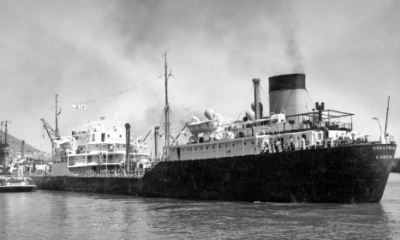
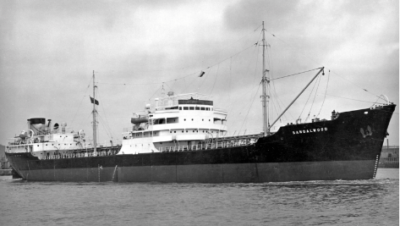
Two new dry-cargo tramps joined the fleet in 1940 from the Laing yard as Beechwood (2) and Glenwood, with the former becoming a war loss on 26th August 1942 to the SW of Monrovia while carrying general cargo from Haifa and Lourenco Marques to the U.K. She had earlier been damaged by bombs and gunfire from aircraft three miles E of Smiths Knoll L.V. while on a voyage from the Tyne to Gibraltar with coal. She was kept afloat only by the use of the ship’s pumps and was diverted to the Thames for discharge of the coal and for repair. The managed French tanker Franche Comte had also to be repaired after torpedo damage by U99 in convoy HX 112 in March 1941.
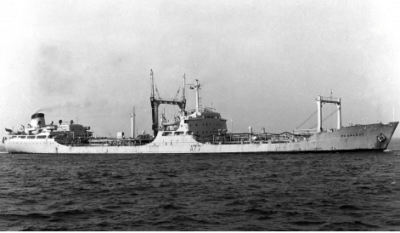
A sister of the fast ‘Wave’ class of Admiralty refuelling tankers was completed in August 1945 for Oil & Molasses Tankers Ltd. as Beechwood (3) to give a fleet of four tankers and two dry-cargo tramps in the early post-war years. The directors of the company in post-war years were Claude Chapman Jacobs as Chairman, John Henry Jacobs, Harry Otto Kohl, Pieter C. Ebeling, Robert Borland and Norman Whyte. The capitalisation of the company was £350,000 with two-thirds of the shares being Ordinary and one-third Preference shares. The last dry-cargo tramp Valewood was sold in 1949, and the tanker fleet was then built up by the addition of eight new tankers and one purchased tanker over the next ten years. The purchased one was also the smallest, Common Brothers Laristan of 1927 renamed Cherrywood in 1949 and traded for four years. The new tankers were Rosewood of 1947, Hollywood of 1951, Sandalwood of 1952, Laurelwood of 1953, Oakwood of 1954, Beechwood (4) the largest at 27,300 dwt in 1957, and Regent Falcon of 1959 for long-term charter to the Regent Petroleum Co. Ltd., and the Admiralty tanker Pearleaf of 1960 which completed a magnificent 26 years on charter to the Navy before being sold in 1986 to Saudi Arabian owners for static use.
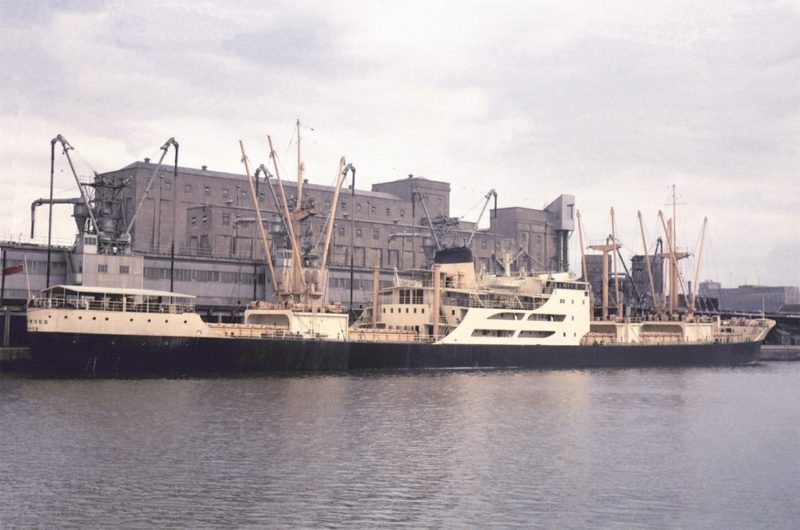
Harry Otto Kohl was also a director of Silver Line, which was a wholly-owned subsidiary of Dene Shipping Co. Ltd. Four ore-carriers were built during 1958/60 for its subsidiaries St. Helen’s Shipping Co. Ltd. and Bishopsgate Shipping Co. Ltd. with 15 year iron ore charters to BISCO. In a ‘splitting-up’ exercise in 1969, two of these were transferred to the ownership of John I. Jacobs & Co. Ltd., with Silvercrag and Bishopsgate being renamed Cherrywood and Beechwood while still on long-term charter to BISCO.
The tanker Laurelwood was also taken on a seven-year Admiralty charter in 1959 and renamed Cherryleaf and was sold at the end of her charter to Greek owners. The company tanker fleet in 1960 was eight tankers strong when three dry-cargo tramps and bulkers were ordered from the Laing yard in Sunderland. The tramp was the engines amidships Teakwood (3) of 12,850 dwt delivered in 1962 with five holds and her bridge deck accommodation extended over no. 4 hold. Rosewood (3) of 15,575 dwt joined in 1963 and a bulker Oakwood (3) of 35,000 dwt joined in 1965. The new chemical tanker Silvermerlin of 1,875 dwt was chartered to Silver Chemical Tankers Ltd. from new in 1968. The tanker North Sands of 68,000 dwt completed in 1966 was managed from new for her owners and builders, the Sunderland & Doxford Shipbuilding Group.

In post-war years the company had expanded its traditional role as London tanker brokers, a role for which they are probably best remembered, and which continued until the early 1980s. Two new Wear-built tankers, Laurelwood (3) and Hollywood (2) of 25,200 dwt, renewed the tanker fleet in 1970. The fleet in 1975 consisted of four tankers, one ore-carrier, the new Italian-built bulker Rosewood (4) of 25,500 dwt and a chemical tanker. A very large tanker of 140,900 dwt was on order at the Gotaverken yard in Gothenburg and was given the traditional name of Teakwood (4) while building. However the oil price hike of October 1973 made her unprofitable to operate and she was sold to Algeria and completed as In Amenas. She then operated as a F.P.S.O. or ‘floater’ in the Ruby offshore oilfield producing oil off Vietnam as Knock Davie owned by Fred. Olsen’s Red Band Tankers. In 1998 she was sold to Nortrans Offshore Vietnam Ltd. as Ruby Princess and was broken up at Xinhui in November 2010.
The tanker companies of the John I. Jacobs Group were then wound up in the period during 1975/77, with the seven-year old tanker Hollywood (2) the last to go in 1977 when sold to Greek owners, having been laid-up at Tilbury since 2nd December 1976. The long-serving Pearleaf was able to continue her Admiralty charter by transferring her to a new company, Jacobs & Partners Ltd. of Stone House, Bishopsgate. Later, with the assistance of finance from Sven Salen of Sweden, a seventeen-strong fleet of coasters of up 1,500 dwt was then built up over a ten year period from 1983. All were given ‘Hoo’ prefixes to their names after the village near Rochester in Kent, and were operated by R. Lapthorn & Co. Ltd. of Rochester, who already had a fleet of similar gear-less low air-draft coasters and had been in the coastal trades business since 1963. There was also diversification into offshore work, as well as two passenger carrying Thames river launches capable of carrying a maximum of 299 passengers and given the traditional names of Hollywood and Rosewood.
John H. Jacobs was the last family Chairman when he retired at the Annual General Meeting of April 1994, and the coasters were sold to Lapthorn during 1996. Michael Kingshott was appointed Managing Director of the new Jacobs Group and has since taken the company name into new directions, initially with a ro-ro service from the Thames to the Continent running as Dart Line. In 2000 Dart Line announced a move of the freight and ferry services from Thames Europort, Dartford, to Shell Haven in Essex. In 2006 the parent company Bidvest sold Dart Line to Cobelfret.


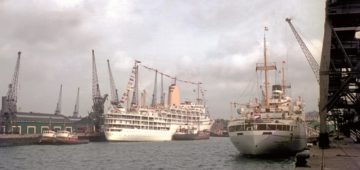



Comments
Sorry, comments are closed for this item